background-image: url(img/people.png) .left-column50[ # Welcome to the Future of Access Technologies Week 9, Sustainability & Disaster Response CSEP 590b, Winter 2023 ] --- name: normal layout: true class: --- # Important Reminder ## This is an important reminder ## Make sure zoom is running and recording!!! ## Make sure captioning is turned on --- [//]: # (Outline Slide) # Learning Goals for today --- .left-column[ ## Disability and climate change ] .right-column[ 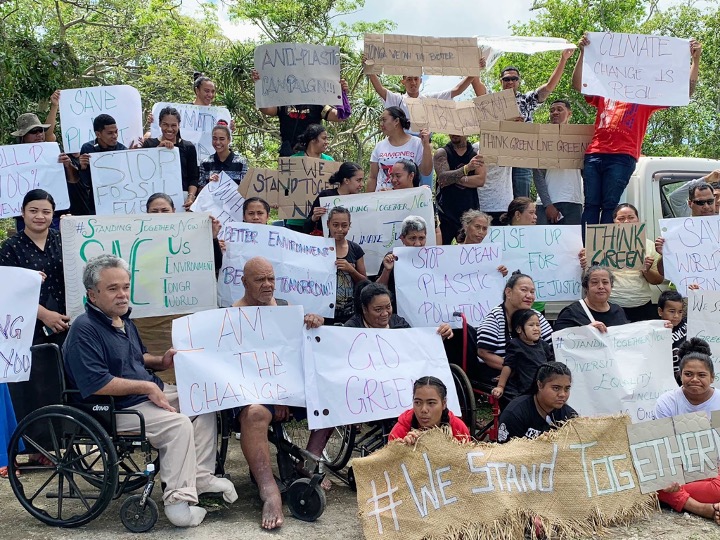 ] --- Quote from “Disability, Climate Change, and Environmental Violence: The Politics of Invisibility and the Horizon of Hope” by Julia Watts Belser (Disability Studies Quarterly) .quote[Disability politics offer a vital resource for grappling with climate change… [they reveal] the political stakes of diagnosis—the way power contours how, when, and to what ends we recognize human and ecological impairment.] --- # A disability-informed technology agenda for addressing the climate crisis (1/10) - Government Services & Civic Engagement Essential to changing how we address climate change, and implementation of the same --- # A disability-informed technology agenda for addressing the climate crisis (2/10) - Government Services & Civic Engagement - Process Accessibility - Resource distribution - Accessibility of voting --- # Example: Disaster Response Planning - Decisions about who is included (e.g. disaster response plans) are often ableist -- actively de-prioritizing disabled lives - E.g. during COVID; Hurricane Katrina - Emergency broadcasts often inaccessible (e.g. no captions; inaccessible data visualizations; no ASL interpretation; inaccessible websites) - Disabled people are often institutionalized (e.g. prison; hospital; “nursing homes”) and many institutions are deprioritized - Shelters may refuse people with disabilities --- # Example: Conservation Conservation often asks people to change behavior to reduce environmental impact Yet such changes often fail to account for accessibility concerns (e.g. straws; inhalers) What priorities do these campaigns reflect? --- # Governmentality, Ableism & Racism (1/2) .left-column50[ 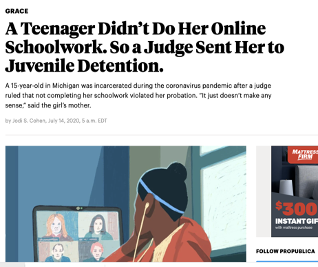 ] --- # Governmentality, Ableism & Racism (2/2) .left-column50[ 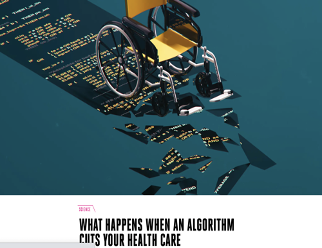 ] .right-column50[ The government is often a site for algorithmic decision making; surveillance; etc This differentially impacts people of color, low-income people and people with disabilities ] --- # A disability-informed technology agenda for addressing the climate crisis (3/10) - Government Services & Civic Engagement - Accessibility must be considered in the government response to climate change. Accessibility can impact safety, civic engagement, access to services, and who is included in the democratic process - Top down decisions that don’t include people multiple viewpoints can be problematic - Give choice/agency to people many backgrounds - Give responsibility for support to governmental context --- # A disability-informed technology agenda for addressing the climate crisis (4/10) - Government Services & Civic Engagement - Education - Source of future leaders and decision makers - Source of future innovators - Strongly associated with things that can help to mitigate climate change, such as empowered family planning for women - Also generally not designed to include people with disabilities --- # A disability-informed technology agenda for addressing the climate crisis (5/10) - Government Services & Civic Engagement - Education - STEM is particularly exclusive and a top interest for disabled people - Tools & software rarely accessible - Accessible teaching also helpful to non-english speakers; undiagnosed; etc. - Lots of improvement possible -- disabled students felt MUCH more supported during COVID [TACCESS 2022] --- # A disability-informed technology agenda for addressing the climate crisis (6/10) - Government Services & Civic Engagement - Education - Information economy - Information is power - Often critical in the fight to address environmental damage, climate change, etc - Can help to support activist movements - Can change the balance of power --- # A disability-informed technology agenda for addressing the climate crisis (7/10) - Government Services & Civic Engagement - Education - Information economy - Example: Rentals and housing efficiency --- # Research Questions Study 1: How does energy consumption in low-income areas differ or compare to those in “green” or typical households? -- Study 2: What are the causes of conflict between landlords and tenants? What are the solutions? -- Study 3: How can energy feedback help to mediate this [CSCW 2014] -- Study 4: How does this differ in other contexts (India) [CHI 2013] --- # Overall conclusions - Money, power imbalances, and lack of information all contribute to and impact how energy is used. - Individual action is limited in impact, particularly when renting. - Information can help activate communities to work together to fight policies that hurt them - Biggest opportunity for change is prior to lease signing --- # Rentals and Temporary Housing More likely to include people with disabilities and health concerns More likely to include lower income households More likely to include people of color and immigrants/refugees Spend greater percentages of income on energy --- <iframe src="https://embed.polleverywhere.com/free_text_polls/6BulXYeFmPsbUKKaVsFzf?controls=none&short_poll=true" width="800px" height="600px"></iframe> --- # What did we find in our studies? .left-column50[ ## Before Renting 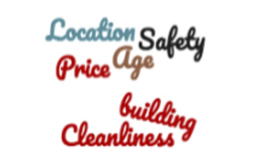 ] -- .right-column50[ ## After Renting 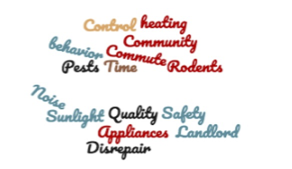 ] --- # Edigs: Estimating Utilities From RECS .column[ 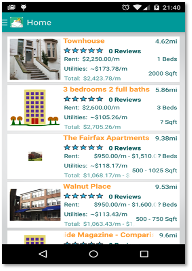 ] .column[  ] .column[ 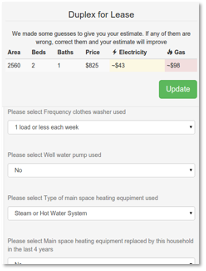 ] .corner-ribbon.tr[COMPASS 2018] --- # Existing Home Feedback Technology Not really targeted at renters (30% in US; 1-5 year turnover) Paucity of information about factors prospective tenants care about - Actual cost - Sunlight & noise - Housing quality --- # Other data could address intersectional issues Housing choices linked to health outcomes & disability (lead, asthma, mold, air quality, etc.) Landlord citations -- is a landlord trustworthy Sunlight [crowdsourced comparable estimates] -- impacts health & energy use Noise -- impacts health/disability & comfort --- # A disability-informed technology agenda for addressing the climate crisis (8/10) - Government Services & Civic Engagement - Education - Information economy - Example: Rentals and housing efficiency - Example: Transportation and public spaces --- # ubi .green[green] (1/3) .left-column[  ] .right-column[ Investigating a Mobile Tool for Tracking and Supporting Green Transportation Habits [Froehlich et al, CHI 2009] ] --- # ubi .green[green] (2/3) .left-column[  ] .right-column[ Two formative studies In-situ deployment ] --- # ubi .green[green] (3/3) 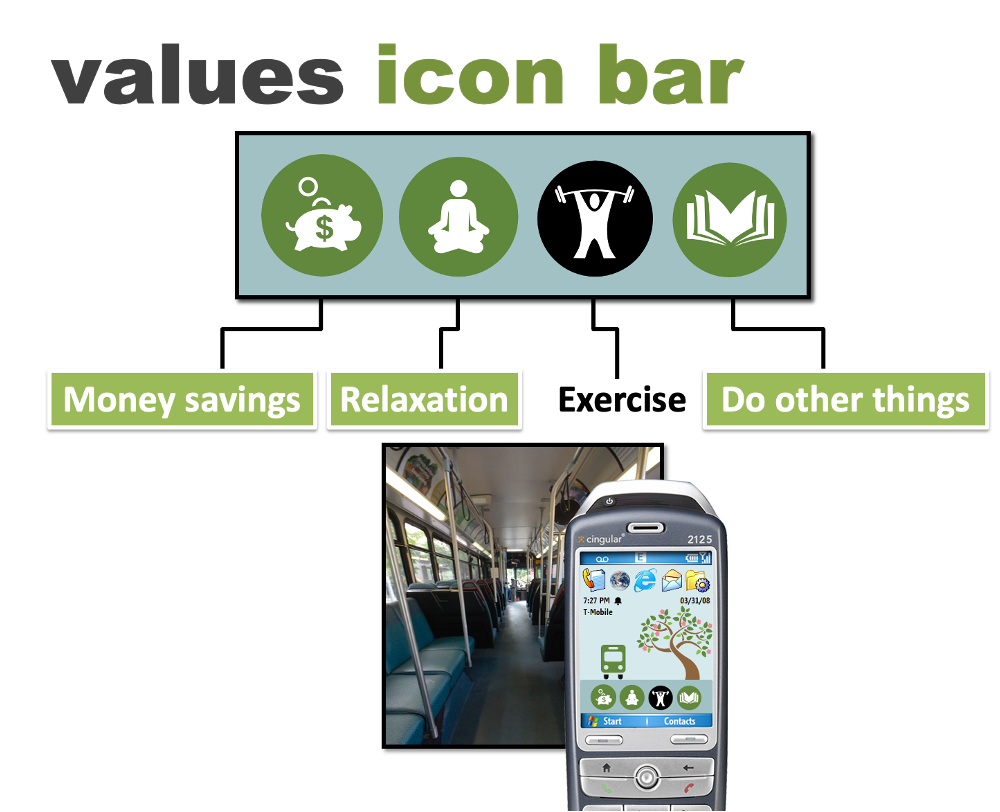 --- # Real-time Recommendations - post-study survey, “what could help you take more green trips” - Reliable transportation (76.8%) - Financial incentives (71.4%) - Knowledge about alternatives (56%) - future designs could suggest alternative forms of transit based on trip history - recommendations could also come in form of neighborhood: - “42% of the people who live in your neighborhood and work in Capitol Hill take the bus.” --- # Potential for behavior change .quote[The motivation for me is moer of the tracking and kind of seeing how I am doing and just the reminder factor of it (Participant 11)] .quote[It really encourages you to analyze your own performance (Participant 8)] .quote[I feel I already travel in a relatively eco-friendly way and the study did not change that (Participant 15)] --- # But is this approach inclusive? Sidewalks, public transit, and businesses can be inaccessible to those with disabilities .left-column30[ 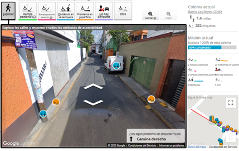 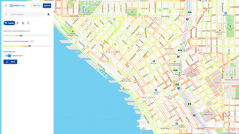 ] .right-column70[ .font-mediumsmall[[Project Sidewalk](http://projectsidewalk.org) combines remote crowdsourcing + machine learning to map and assess accessibility features of sidewalks] .font-mediumsmall[[AccessMap](http://accessmap.io) provides a personalized and interactive view of a city's accessibility, including road grade, sidewalk locations, and curb ramps] ] --- # Urban Accessibility and Mobility Sidewalks, public transit, and businesses can be inaccessible to those with disabilities. Three-fold aim [All work by Froehlich & Caspi]: 1. Develop scalable techniques to map and assess every sidewalk, transit stop, and business in the world 3. Create new digital tools that provide personalized routing, government accountability, and support new urban analytics. 3. Examine geo-spatial patterns of and influences on urban accessibility, barriers and facilitators of accessible infrastructure, and socio-cultural contexts of urban access across the globe. --- # Third Spaces also not accessible 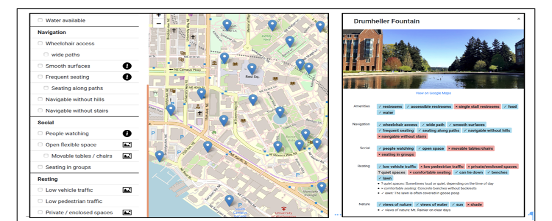 .corner-ribbon.tr[COMPASS 2021] --- # A disability-informed technology agenda for addressing the climate crisis (9/10) - Government Services & Civic Engagement - Education - Information economy - Innovation - Innovation is part of how we address the climate crisis - Accessibility has driven innovation over the years - Who innovates matters and impacts what is made (back to education…) --- # Case study: Medical Making - Conflict between Community and Clinical Values in the U.S. - Have seen in multiple case studies - Wish to help where you can, right away vs “do no harm” - Emphasis on doing what you can vs longitudinal support/whole case management - Deeply rooted differences - One team member was threatened with COVID-infected artifacts when asking about safety - Complete rift in one COVID site of study between medical making and community making .corner-ribbon.tr[Savage, TACCESS 22] --- # Study Population: Makers; recipients; clinicians in seven countries - United States (E-Nable; and two private companies) - Mexico (E-Nable with and without government) - India (E-Nable) - Chile (E-Nable) - Costa Rica (E-Nable) - Brazil (E-Nable with government) - France (E-Nable --- # Key differences between U.S. and other countries - Multi-stakeholder collaborations (innovators and clinicians) - Formal collaborations with documented guidelines - Express support for follow up - Often include funding - Community engagement - Families/community working and learning together - Follow up included in process - Legal context more forgiving? --- # A disability-informed technology agenda for addressing the climate crisis (10/10) - Government Services & Civic Engagement - Education - Information economy - Innovation